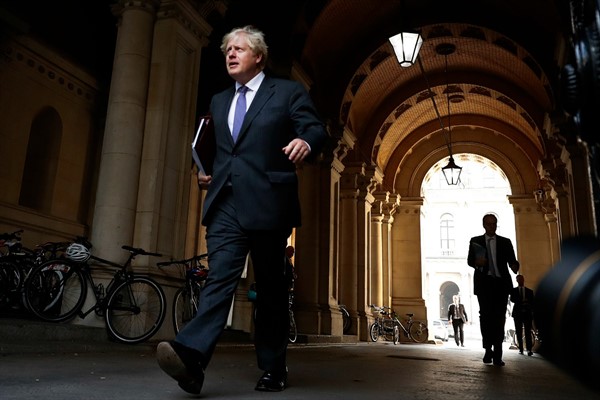Four years after Britons voted narrowly to leave the European Union, the Brexit drama continues. The United Kingdom formally left the EU in January, but trade and other arrangements remain the same while negotiators try to reach a final agreement by the end of the year on the terms of the post-Brexit trade relationship. So far, however, the deadline is looming with no agreement in sight. British Prime Minister Boris Johnson last week raised the stakes by threatening to stop talking if there is no agreement by Oct. 15. His government further complicated things by releasing draft legislation that Johnson’s own Cabinet members admit would contradict the terms of its withdrawal agreement with the EU, which was negotiated last year, and violate international law, since it is an international treaty.
As part of his strategy for gaining and holding power—by catering to constituencies favoring a “hard” Brexit—Johnson has repeatedly flirted with the idea of leaving the EU without a deal. His predecessor as prime minister, Theresa May, resigned after she failed to gain support from Johnson and other hard-liners for the withdrawal agreement she had negotiated with the EU. Johnson made leaving the EU by the end of 2019 a core element of his case to succeed May, and then used the threat of a no-deal outcome to try to pressure the British Parliament into approving the slightly modified pact that he struck with Brussels. That deal, among other issues, set the level of payments that the U.K. will owe the EU as a result of withdrawal and also addressed the status of EU citizens in the U.K. and British citizens in the rest of the EU.
The most difficult Brexit issue, however—and the one that brought down May—has always been how to handle the border between Ireland and Northern Ireland. The key element of the Good Friday Agreement that ended the Troubles, the decades of sectarian violence in Northern Ireland, is the open border with Ireland, which has allowed goods and people to go back and forth ever since, without barriers or border checks. The dilemma is how to keep that border open if the U.K. is no longer in a customs union with the EU, meaning that some goods will become subject to import duties or will be regulated under different standards. May’s solution was to negotiate a so-called backstop that would effectively keep Northern Ireland in the EU’s single market until another solution could be found. But that compromise was unacceptable to hard-line Conservative Brexiteers, including Johnson.

